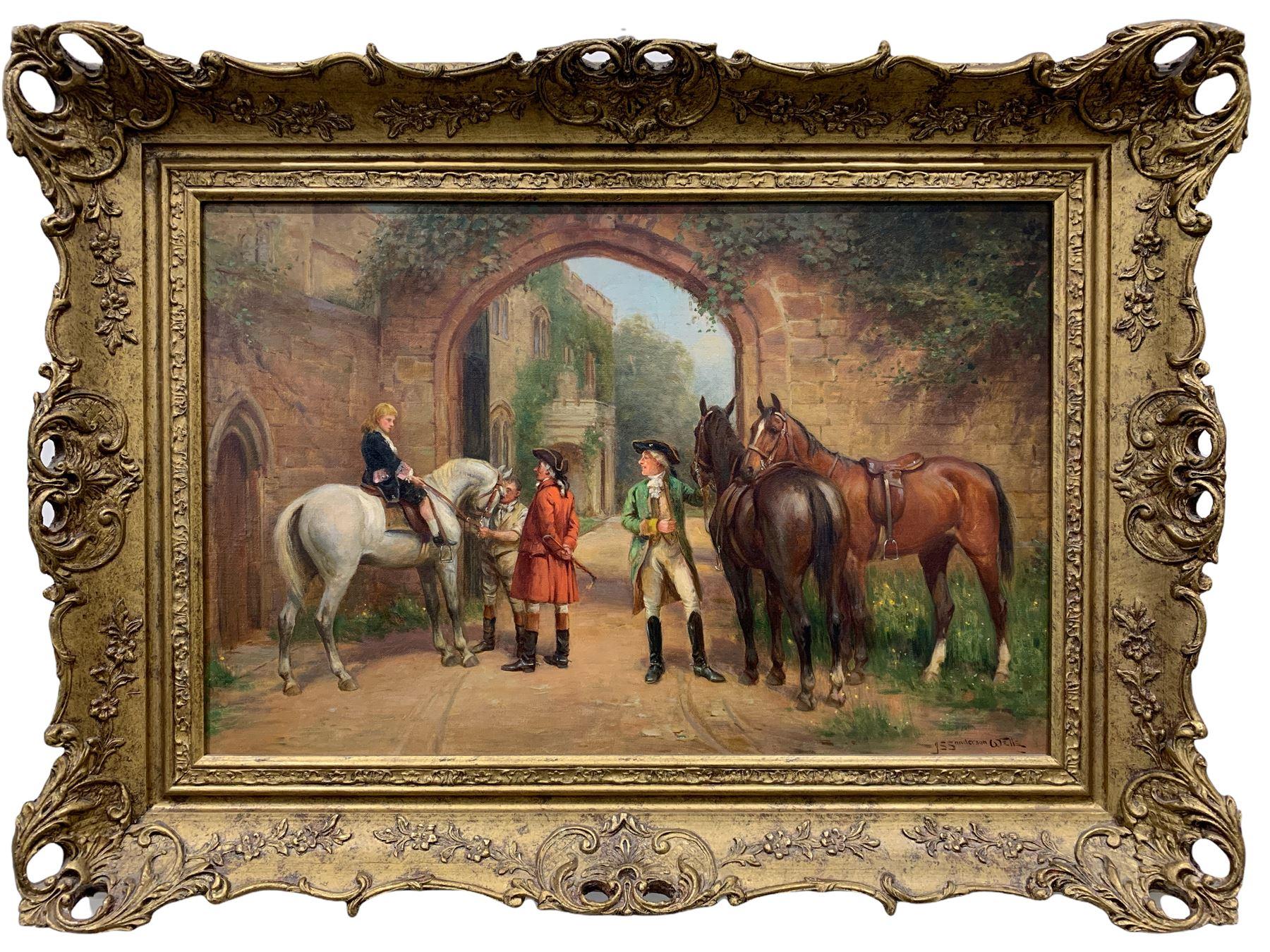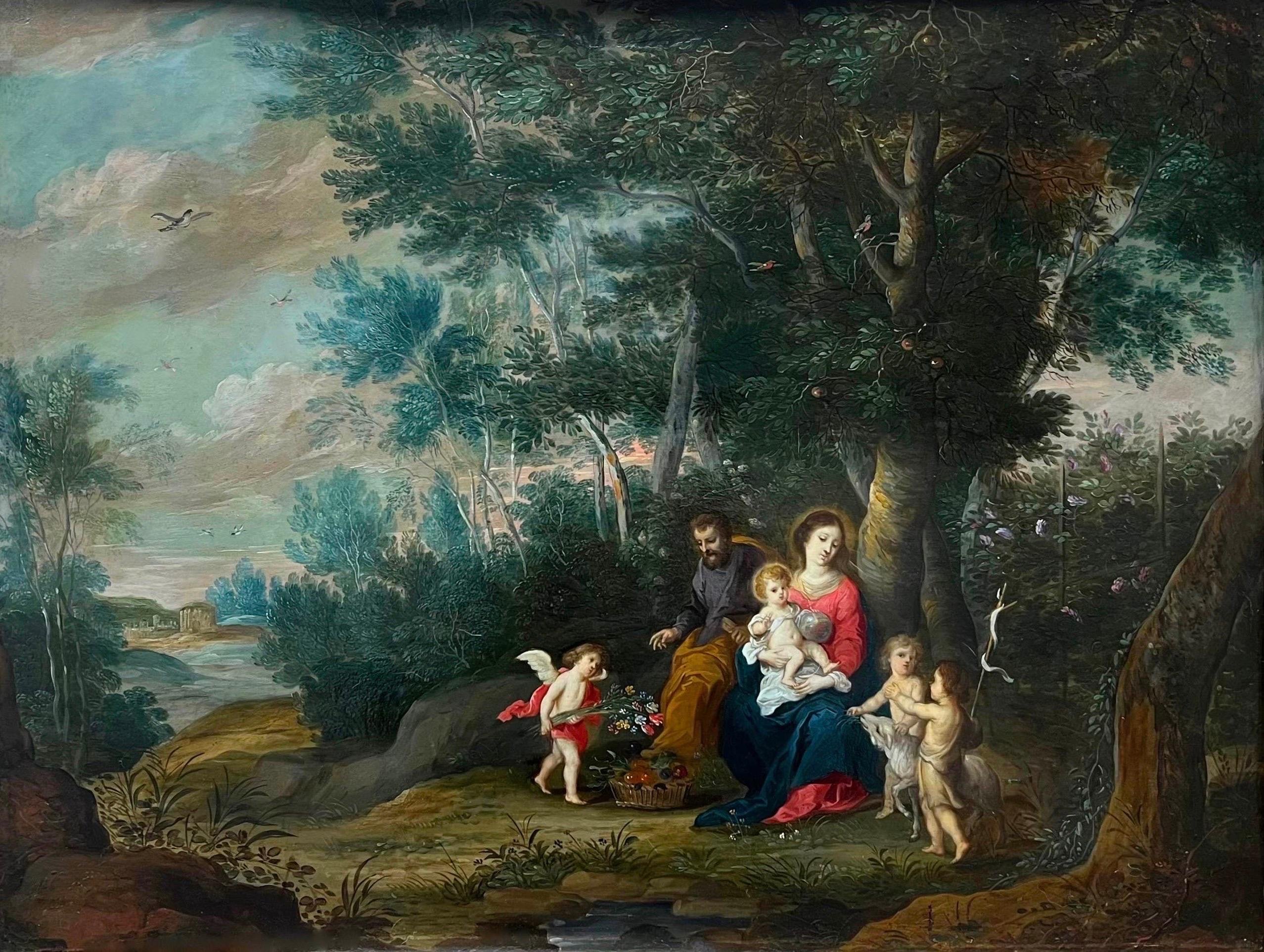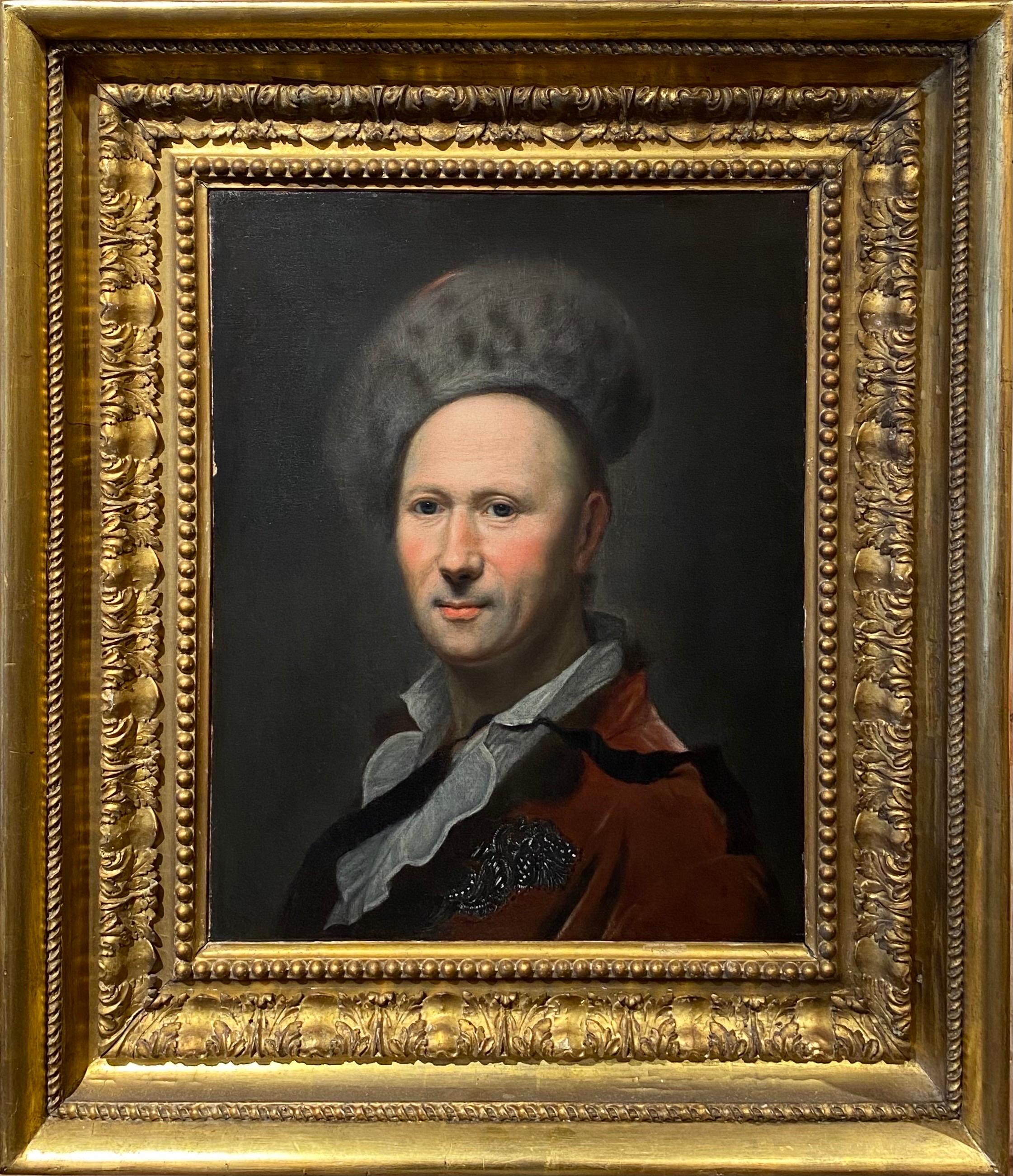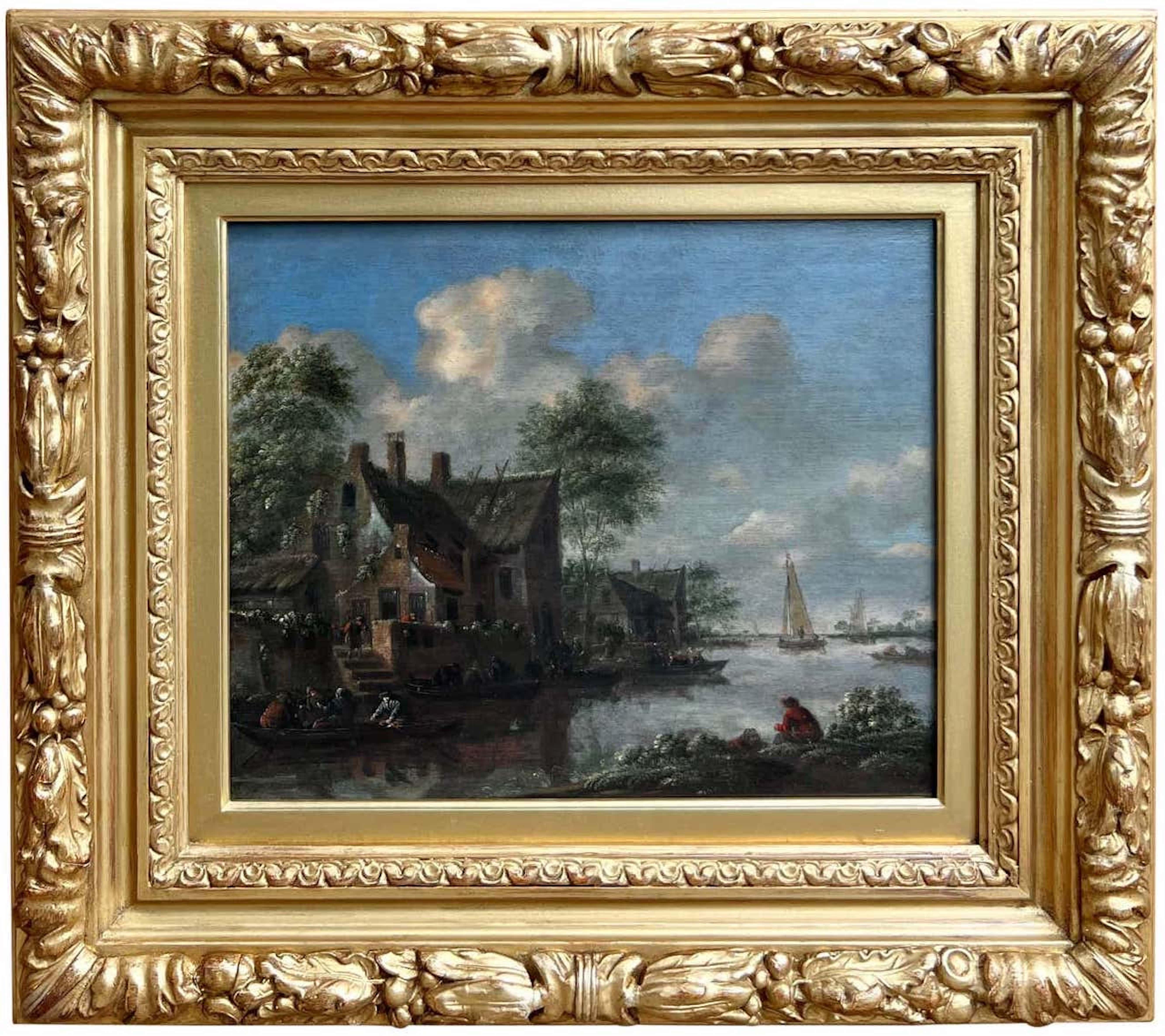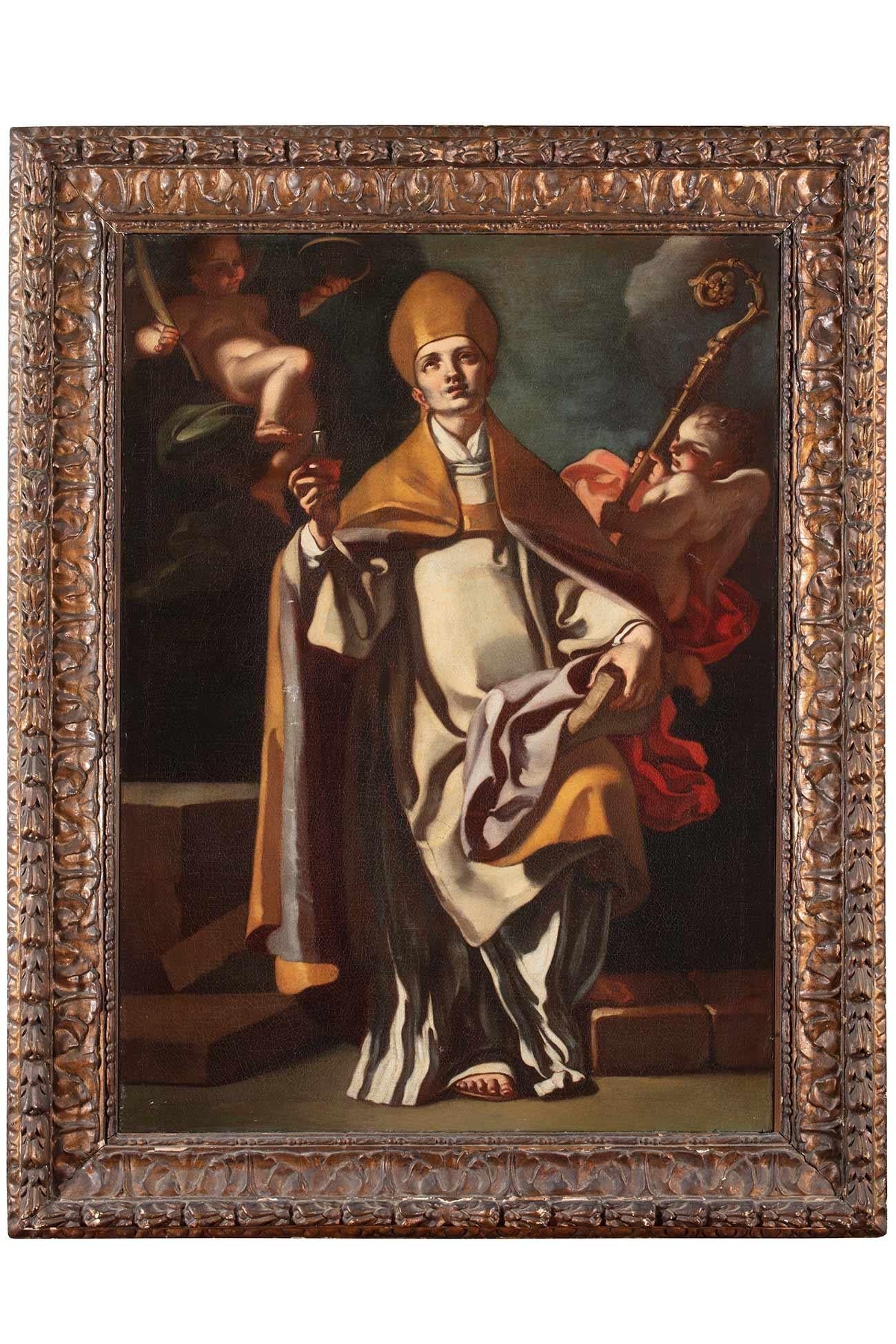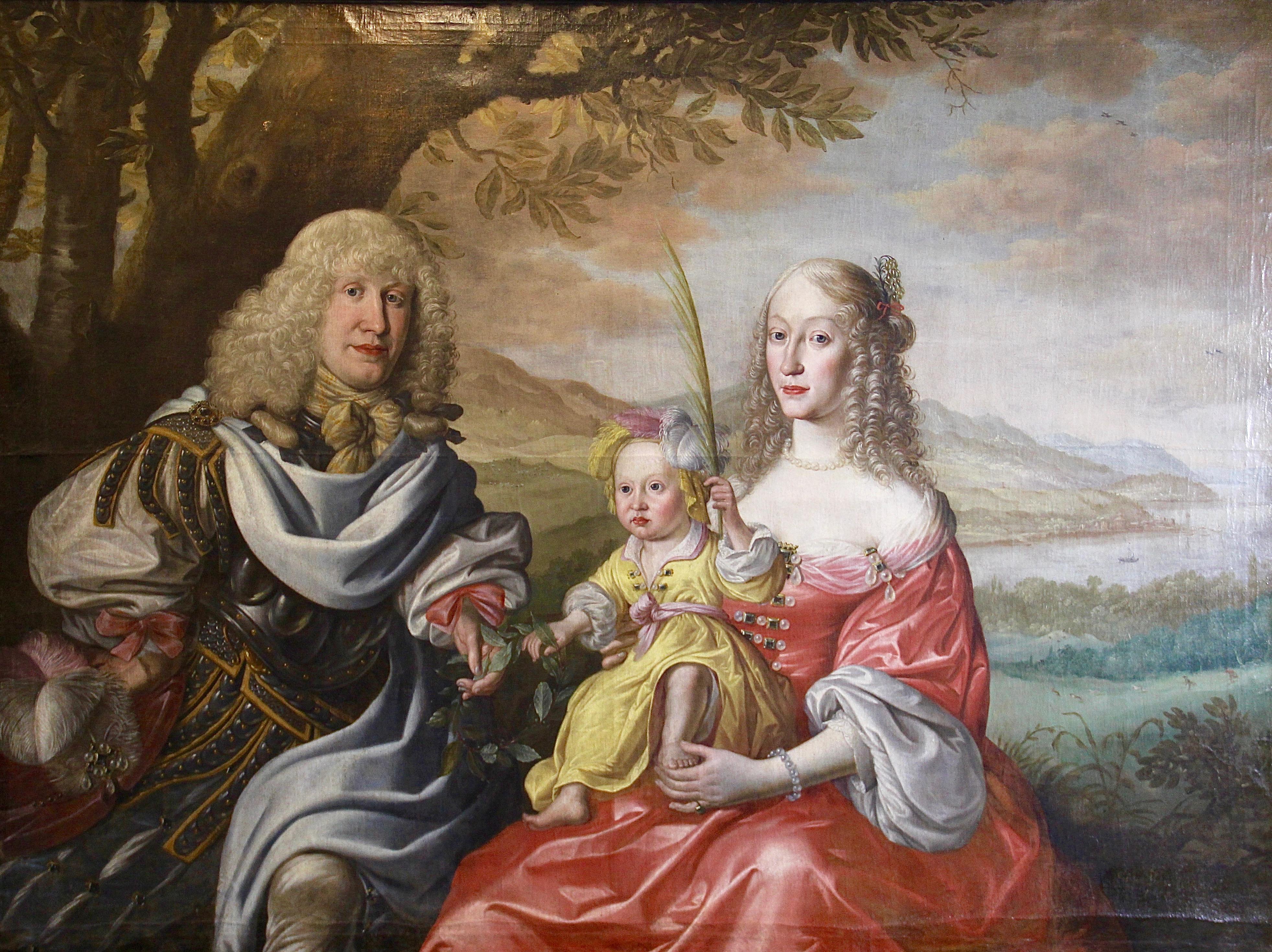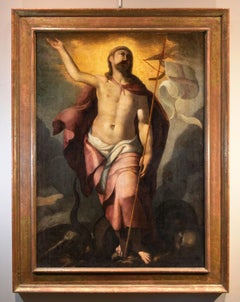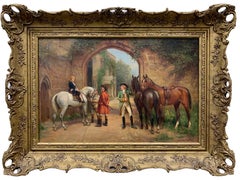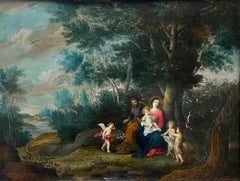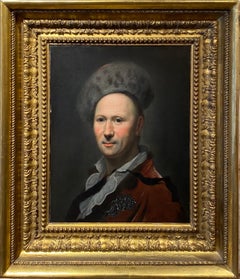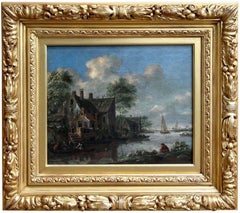Items Similar to St. George Dragon Raphael Sanzio Paint Oil on canvas 17/18th Century Old master
Want more images or videos?
Request additional images or videos from the seller
1 of 20
St. George Dragon Raphael Sanzio Paint Oil on canvas 17/18th Century Old master1650-1750
1650-1750
About the Item
St. George Defeats the Dragon
Follower of Raphael Sanzio (Urbino, 1483 - Rome, 1520), 17th-18th century
Oil on oval canvas
124 x 95 cm./ in frame 148 x 118 cm.
The painting evocatively illustrates the triumph against the dragon of St. George, a noble knight of the Christian faith originally from Cappadocia (in present-day Turkey), whose miraculous adventure, imbued with symbolic meanings in the struggle between Good and Evil, has always been a favourite theme in art: in the Renaissance period it made it possible to stage ideals and values of both chivalry and religion.
The legend of Saint George, both saint and knight, is based on the model of the battle waged by the archangel Michael, exemplifying the struggle of Good against Evil, as described in the book of Revelation, from which, presumably, the image of the dragon is also taken.
"He came one day to the kingdom of Silene, plagued by the presence of a terrible dragon, whose destructive power could only be contained by human sacrifice. It was the 'soldier of Christ' who killed the dangerous beast and saved the sovereign's daughter from the monster's jaws, and as a reward he wanted neither honours nor money, but for all the people to convert to Christianity by receiving baptism".
Our painting is a good quality replica of one of Raphael Sanzio's most famous creations, the "Saint George and the Dragon" [1] commissioned in 1505 by Guidobaldo da Montefeltro to be sent as a gift to Henry VII of England and now in the National Gallery of Art in Washington (Mellon Collection)
In the painting St. George is caught in the moment of his triumph over the Dragon, the emblem of Evil, as he spears him.
He is depicted according to traditional iconography, astride his steed dressed in shining armour, a crested helmet, while his iridescent red cloak appears puffed by the wind, enhancing the dynamism of the sculptural figure.
Defiladed, to the right, is the princess, composedly praying, gazing with devotion at the hero in action; while behind her we can make out a building, surrounded by an extensive wall to protect it from the dragon. This detail, not present in Raphael's original, is an addition by our author certainly to pay homage to the commissioner's place of origin or the place where the work is to be painted.
Analysis of the general stylistic features of the work allow us to propose a dating of the painting between the 17th and 18th century, linked to an artist marked by Roman culture.
Good conservation condition.
[1] Raphael Sanzio, c. 1505, Oil on panel, Location National Gallery of Art, Washington
ADDITIONAL INFORMATION:
The work is sold complete with a beautiful gilded wooden frame and comes with a certificate of authenticity and descriptive iconographic card.
We take care of and organise the transport of the purchased works, both for Italy and abroad, through professional and insured carriers.
It is also possible to see the painting in the gallery in Riva del Garda, we will be happy to welcome you to show you our collection of works.
Contact us, without obligation, for any additional information.
- Creation Year:1650-1750
- Dimensions:Height: 58.27 in (148 cm)Width: 46.46 in (118 cm)
- Medium:
- Movement & Style:
- After:Raphael Sanzio (Urbino, 1483 - Rome, 1520), 17th-18th century (1483 - 1520)
- Period:
- Condition:
- Gallery Location:Riva del Garda, IT
- Reference Number:1stDibs: LU988111563652
About the Seller
4.9
Platinum Seller
Premium sellers with a 4.7+ rating and 24-hour response times
Established in 2017
1stDibs seller since 2018
238 sales on 1stDibs
Typical response time: <1 hour
- ShippingRetrieving quote...Shipping from: Riva del Garda, Italy
- Return Policy
Authenticity Guarantee
In the unlikely event there’s an issue with an item’s authenticity, contact us within 1 year for a full refund. DetailsMoney-Back Guarantee
If your item is not as described, is damaged in transit, or does not arrive, contact us within 7 days for a full refund. Details24-Hour Cancellation
You have a 24-hour grace period in which to reconsider your purchase, with no questions asked.Vetted Professional Sellers
Our world-class sellers must adhere to strict standards for service and quality, maintaining the integrity of our listings.Price-Match Guarantee
If you find that a seller listed the same item for a lower price elsewhere, we’ll match it.Trusted Global Delivery
Our best-in-class carrier network provides specialized shipping options worldwide, including custom delivery.More From This Seller
View AllPerroneau Portrait Lady Woman Paint Oil on canvas 18th Century Old master French
Located in Riva del Garda, IT
Jean-Baptiste Perroneau
(Paris, 1715 – Amsterdam, 1783)
Portrait of a lady
Oil on oval canvas
60 x 50 cm. - In frame 77 x 66 cm.
Work accompanied by expertise: Raffaelle Colace (Cremona), Ferdinando Arisi
Reference bibliography: d’Arnoult, Dominique (2014) Jean-Baptiste Perronneau, c 1715-1783, un portraitiste dans l’Europe des Lumières
Excerpt from the expertise of Dr. Colace:
This refined portrait of a lady is a perfect example of the style of Jean-Baptiste Perroneau, a very talented French painter, whose most beautiful works are located, just like this one, between the fifth and sixth decades of the eighteenth century.
"Perroneaeu is more naturally colored than La Tour, the est, in the peinture de poussière colorée, tout plein de tons clairs, frais, presque humides": this is how his brothers wrote about him in La Maison d...
Category
18th Century Old Masters Paintings
Materials
Oil
$11,478 Sale Price
20% Off
Portrait Knight Paint Oil on canvas 17th Century Lombard school Old master Italy
Located in Riva del Garda, IT
Lombard painter of the 17th century
Portrait of a Knight in Armour
Oil on canvas
81 x 70 cm./ Framed 93 x 82
A handsome gentleman in armour, immortalised in an authoritative and pr...
Category
17th Century Old Masters Paintings
Materials
Oil
$5,920 Sale Price
20% Off
Resurrection Christ Tiziano 16/17th Century paint Oil on canvas Old master Italy
By Tiziano Vecellio (Pieve di Cadore 1490 - Venice 1576)
Located in Riva del Garda, IT
The Resurrection of Christ
Follower of Tiziano Vecellio (Pieve di Cadore 1490 - Venice 1576)
Venetian school of the late 16th/early 17th century
Oil on canvas
108 x 78 cm. - Framed 129 x 99 cm.
This jewel of the Venetian school, a work executed between the 16th and 17th centuries by a Venetian artist, illustrates the episode of the Resurrection of Christ: as reported in the Gospel of Matthew (Matthew 28:1-7) the event is accompanied by an explosion of light and glow, with the figure of Christ rising into the sky.
Christ's face, serene and victorious, looks up towards the Light and the Infinite, in contrast to his majestic figure, here constructed with the appearance of a classical sculpture, contrasted by an intensely luminous background.
The Risen One firmly holds in His hand the banner (white with a red cross) of the Resurrection, also known as the flag of St. George, which iconographically represents His victory over death, while raising His right hand in a blessing act. With his feet he crushes a snake and a skull, a sign of Christ's triumph over sin and death.
The painting belongs to the Venetian school and presents clear reminiscences with the works of Titian Vecellio...
Category
17th Century Old Masters Paintings
Materials
Oil
$7,830 Sale Price
20% Off
De Wit Flowers Still life Paint Oil on canvas 18th Century Flemish Cupids Art
Located in Riva del Garda, IT
Jacob De Wit (Amsterdam, 1695 - 1754) attributable/ workshop
Pair of Cupids with Garland of Flowers
Oil on canvas
91 x 103 cm. - Framed 104 x 115 cm.
Provenance: Christie's (London, Old master Painting 12.12.1996) lot 82
This magnificent composition depicts two cupids holding a garland of flowers, placed on a fine architecture with bas-reliefs and masks, presumably the top of a fountain.
One of the two cupids sympathetically holds a part of it with his hands, while his head turns towards the viewer; the second cupid, on the other hand, must have clumsily broken the thread holding its end, and is sitting sullenly with a torch and a tear streaking his chubby cheek.
The work, given its stylistic features and compositional taste, can be attributed to the Flemish artist Jacob de Wit (Amsterdam, 1695 - 1754), or to an artist from his workshop, with his typical triumphal and opulent style, which reveals clear influences from Rubens and Van Dijck, but also from Gerard de Lairesse...
Category
18th Century Old Masters Paintings
Materials
Oil
$14,499 Sale Price
20% Off
Madonna Angels Van Balen Paint Oil on table Old master 16/17th Century Flemish
Located in Riva del Garda, IT
Hendrick van Balen (Antwerp 1575 - 1632) workshop
Possible Jan van Balen (Antwerp 1611 - 1654)
Madonna and Child with Three Angels
Oil on panel
65 x 50 cm....
Category
17th Century Old Masters Paintings
Materials
Oil
$7,107 Sale Price
20% Off
Annunciation De Witte Paint Oil on canvas Old master 17th Century Flemish Art
Located in Riva del Garda, IT
Pieter de Witte, also known as Peter Candid (Bruges, 1548 - Munich, 1628) - Workshop/School
The Annunciation
oil on canvas
(cm): 79 x 110 - framed 92 x 127
We are delighted to present a fascinating work, dating back to the beginning of the 17th century, inspired by the prototype of the Annunciation created around 1586-1595 by Pieter de Witte, also known as Peter Candid (Bruges, 1540/1548 - Munich, 1628), which has been lost but made famous thanks to an engraving made and published by Jan Sadeler I (1550-1600).
A painter of Flemish origin with strong affinities to 16th century Italianising culture, De Witte tackles the theme of the Annunciation numerous times, revealing knowledge of both Roman and Florentine Mannerism, inherited from his Italian sojourn.
Some of these works are now housed in various international museums, in addition to autograph or workshop works that can be found in numerous public or private collections; in this regard, we may mention the following:
- National Museum in Prague [1]
- Carrara Academy of Bergamo, Angelo Annunziante and Vergine Annunziata [2].
- Finnish National Museum, Helsinki
- Private property, religious institution Bergamo (Bergamo area)
Observing the composition, we can admire the rather well-established iconographic scheme, with the two figures immersed in an almost dreamlike atmosphere: the Archangel Gabriel on the left, of an ethereal beauty, appears imperious as he delivers the supreme annunciation to the Virgin Mary, who greets him with lowered eyes, composed in her amazement; surprised in the act of reading a book, she receives the white lilies...
Category
17th Century Old Masters Paintings
Materials
Oil
$10,270 Sale Price
20% Off
You May Also Like
John Sanderson Wells , oil, horses, horse riding country scene
By John Sanderson-Wells
Located in York, GB
A fine oil painting by the renowned artist John Sanderson Wells
" Returning from a Country Ride" This painting captures beautifully the image o...
Category
Early 20th Century Old Masters Animal Paintings
Materials
Oil
17th century Flemish old master landscape - Rest on the flight to Egypt - Christ
Located in Aartselaar, BE
17th century Flemish Old master painting "The Rest on the flight into Egypt", Victor Wolfvoet the Younger
Amidst a serene landscape, the Holy Family rests beneath the shade of a spr...
Category
17th Century Old Masters Figurative Paintings
Materials
Copper
Portrait of Conrad Friedrich Hurlebusch, Early 18th Century Oil Painting
By Dominicus van der Smissen
Located in London, GB
Dominicus van der Smissen
Early 18th Century
Portrait of Conrad Friedrich Hurlebusch
Oil on canvas
Image size: 20½ x 16¼ inches
Period gilt frame
This is a portrait of Conrad Friedrich Hurlebusch, composer, Kapellmeister and organist, whom Van der Smissen most probably portrayed during his stay in Hamburg, Brunswick or Amsterdam. The identification is based on the reproduction of the portrait which was engraved by Pieter Anthony Wakkerdak (1740- 1774).
Van der Smissen has reduced the face of the sitters to an egg-shaped oval in three-quarter view, applying diminution to one half of the figure’s torso, which is farther away from the viewer. This partial side view, with the head turned to look at the viewer over the shoulder, creates spatial depth and brings the figure to life by avoiding the stiffness of a frontal depiction.
Because the artist chose to highlight the figure from above, a distinct shadow is cast under the tip of the nose, in the shape of a triangle. This is an often recurring and almost ‘signature’-like feature in Van der Smissen’s oeuvre.
Hurlebusch's garments are of a very high quality and serve to reflect the sitter’s wealth, status and elegance. During this period, gentlemen often shaved their heads in order to facilitate the wearing of a wig, which wouldbe worn with a suit. Here Hurlebusch has been depicted in a luxurious turban-like cap lined with lynx fur, a highly fashionable and expensive material at the time.
Over his shirt, he wears a velvet fur-lined gown adorned with decorative clasps fashioned from silver braid. The elegant informality of his appearance can be seen in his unbuttoned shirt and the unfastened black ribbon hanging from his button hole, which has been artfully arranged into a fluttering drape by the portraitist.
The Sitter
Hurlebusch was born in Brunswick, Germany. He received the first instructions in his field from his father Heinrich Lorenz Hurlebusch, who was also a musician. As an organ virtuoso, he toured Europe, visiting Vienna, Munich and Italy.
From 1723 to 1725 he was Kapellmeister in Stockholm; later he became Kapellmeister in Bayreuth and Brunswick, and lived in Hamburg from 1727 to 1742, where he had contact with fellow composers Johann Mattheson and Georg Philipp Telemann. He made his living composing, performing and teaching.
In 1735 and 1736, he is believed to have visited Johann Sebastian Bach in Leipzig, who promoted Hurlebusch’s compositions as the local seller...
Category
Early 18th Century Old Masters Portrait Paintings
Materials
Canvas, Oil
Village by the Lake
Located in Wiscasett, ME
Old master painting featuring a busy port city in the 17th century. Most likely Dutch and very close in style to the work of Thomas Heeremans. This is...
Category
17th Century Old Masters Landscape Paintings
Materials
Oil
18th Century by Evangelista Schiano Saint Gennaro Oil on Canvas
Located in Milano, Lombardia
Evangelista Schiano (attr.) (active in the 18th century)
Title: Saint Gennaro
Medium: Oil on canvas
Dimensions: without frame 102 x 74 cm - with frame 126.5 x 100 cm
19th century car...
Category
Mid-18th Century Old Masters Portrait Paintings
Materials
Cotton Canvas, Canvas, Oil
SIMON PETER TILEMANN, Family Portrait, 1658, Old Master. Baroque Rococo Painting
By Simon Peter Tilemann
Located in Berlin, DE
Extremely decorative and large oil painting from the 17th century.
Restored in places.
Signed and dated Simon Peter Tileman 1658 fecit 'lower right
Dimensions without frame.
From Wikipedia, the free encyclopedia:
Simon Peter Tilemann (1601, Lemgo – 1668, Vienna), was a German Baroque painter who was active Bremen, Kassel and Italy.
According to Houbraken he first learned to paint flowers and he had a daughter who could paint flowers in watercolors. He was a good landscape painter who spent many years in Italy, but later switched to portrait painting and who painted the portrait of Ferdinand...
Category
1650s Old Masters Portrait Paintings
Materials
Canvas, Oil
Recently Viewed
View AllMore Ways To Browse
Art 18th Century
Framed 18th Century Art
18th Oil
18th Century Old Masters
18th Century Italian Artists
18th Century Canvas
St George Art
Painting Of George Washington
Oil Paintings 17 Century
Old Painting Oil On Panel
Old Master Roman
18th Century Italian Paintings
Old Antique Money
Saint George
Rome Model
Old Master Renaissance
Old Master Painting 17th Century
Old Antique Dresses
